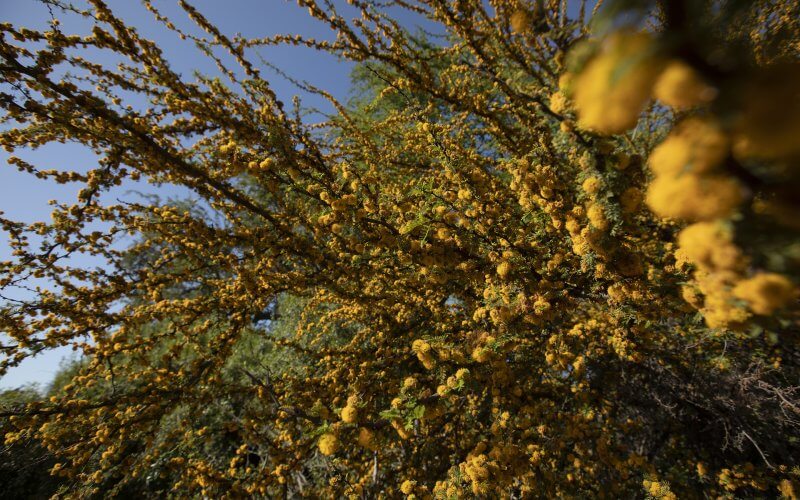
Within the Cal State Fullerton Arboretum and Botanical Garden, there are 38 sub-collections, featuring a wide array of different plants, trees and flowers. One of these is the thorn forest, located in the area surrounding the Acacia Gate that leads to student housing.
Thorn forests are an assemblage of plants that grow in subtropical or warm temperate areas that have little seasonal rainfall. However, they can transition into savanna woodlands if rainfall increases or deserts in drier climates. Thorn forests are typically found in Africa and Central/South America although other parts of the world also have them.
Mostly consisting of thorny small trees, these plants have adapted to shed leaves during dry seasons to prevent water loss, and have photosynthetic bark and small, leathery leaves. They also have long roots that allow them to access groundwater. Cacti and euphorbias are common.
“The trees and shrubs in this collection are well adapted to heat, so they typically look good through summer,” said Greg Pongetti, living collections curator. “There are many species of sage and other perennials planted under the trees and you can typically find something blooming through the summer.”
Thorn forests are important for multiple reasons. They can preserve threatened plants, attract pollinators, and be used in cooking or for medicinal purposes. For instance, the silky hairs from the fruits of the white floss-silk tree from western South America are used to stuff pillows, mattresses and cushions as well as repel fleas, bedbugs and moths. The oil from these seeds can also be used in cooking and to make soap.
Among the plants found in the Arboretum and Botanical Garden’s thorn forest are espinillo (Vachellia caven), boat thorn acacia (Vachellia campeachiana) and anaboom (Faidherbia albida).
Learn more about the Arboretum and Botanical Garden at Cal State Fullerton.